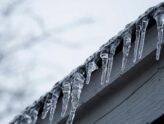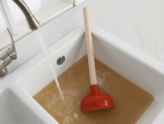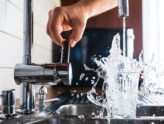Your home’s plumbing efficiency can lessen over time. If you have an older home, your plumbing may be at a particularly high risk, as many systems lack the more energy-efficient design components present in newer builds.
As your local plumbing experts, the team at Caldwell Plumbing can recommend practical ways to check your system to ensure it is running as efficiently as possible. Doing so will reduce energy consumption, save on utility bills, and minimize the environmental impact of your home. Here’s what to do.
Maintenance Checks for Plumbing System Efficiency
At least once a year, have a professional plumber perform a thorough maintenance check on your entire home’s plumbing system to ensure your plumbing system’s efficiency.
Inspect for Leaks
They should check every faucet, pipe, and toilet for any signs of leaks. Even a small drop can waste gallons of water every year, and your utility bill will reflect this drop in home plumbing efficiency.
Check Your Water Heater
Your water heater needs an inspection to see if there is sediment buildup. Hints that might be the case can include the water temperature fluctuating, the water taking a long time to heat up, or there being very little hot water. To resolve this issue, flush the tank.
Check Water Pressure
High water pressure can put a strain on your plumbing system. A pressure gauge from your local hardware store can check your home’s water pressure. Pressure between 40-60 PSI is optimal for home plumbing efficiency.
Upgrade to More Efficient Plumbing Fixtures
If you have not already, consider upgrading to modern energy-efficient fixtures.
- An older model toilet purchased before the 1990s uses 3-7 gallons of water with every flush. Modern toilets use 1.2-1.7 gallons of water. Low-flow faucets and showerheads are easy to install and can significantly affect your home plumbing efficiency.
- A toilet should not use the same amount for every flush. Dual-flush toilets offer flexible flushing options – a low-volume flush for liquid waste and a high-volume flush for solid waste. This alone results in significant water savings over time and cuts down on utilities.
- A tankless water heater reduces water waste and works on demand, heating only as much water as you need. Compared to a traditional model, a tankless water heater conserves between 27 and 50 percent more energy while still providing all the hot water your kitchen, laundry room, and bathroom require.
Insulate Your Pipes for Better Home Plumbing Efficiency
Insulating your hot water pipes reduces heat loss as the hot water travels to the faucets and will help boost your home plumbing efficiency. For your cold pipes, insulation can reduce condensation which brings down the risks of water damage and mold growth.
Most importantly, for all pipes, insulation during the colder months prevents frozen pipes and pipe bursts, especially when you have plumbing lines travelling through a basement or crawl space. These areas can get very cold during winter and cause lots of trouble for your plumbing system.
Better Water Usage Means More Efficient Plumbing
Lastly, no home plumbing efficiency plan is complete without a way to optimize water usage.
Fix Dripping Faucets
Any dripping faucets with a faulty seal or worn cartridge can be easily replaced. Don’t let any faucet drip indefinitely. Fix a dripping faucet as soon as you notice it.
Install a Water Softener
Hard water can mean scale buildup in your pipes and appliances, which affects the efficiency of your plumbing. A water softener extends the life of your system by reducing the mineral content in the water.
Use a Smart Irrigation System
Smart home technology can play a role in plumbing efficiency by adjusting watering schedules for your lawn, garden, or landscaping based on weather conditions.
Follow Our Home Plumbing Efficiency Tips
The plumbing system in the average home uses far more water than is required. Caldwell Plumbing can help you refine your home plumbing efficiency and bring down costs and water waste. Boost the efficiency of your plumbing with the best Durham Region plumbing services at Caldwell Plumbing.
Below, we’ve compiled answers to some common questions that might help further clarify how to get better efficiency from your plumbing.
Signs include high water bills, fluctuating water temperatures, low water pressure, slow drains, and persistent leaks. Addressing these early can prevent more significant issues down the line.
It’s recommended to have a professional inspection at least once a year to ensure everything is functioning properly. This helps catch any small issues before they turn into major problems, saving you time and money in the long run.
Yes! Simple tasks like fixing dripping faucets, using low-flow aerators, and installing pipe insulation are effective DIY methods to boost efficiency without needing professional help.
















